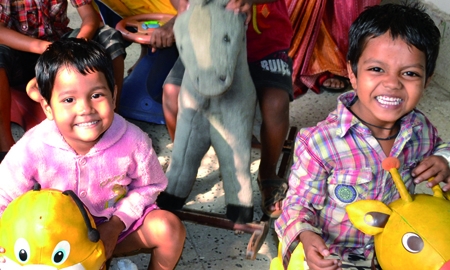Bangladesh has a middle-class population of around 60 million people, some 100 million of working age and about 30 million under the age of 14.
The high proportion of people at or below working age – close to 70 per cent of the population are under 35 years old – means that a large section of society can or soon will be able to participate productively in Bangladesh’s economy. This raises its output, productivity and tax revenues, while the falling fertility rate (which has halved in 20 years) means reduced demand for education and healthcare resources.
Such a characteristic – the changes in the age demographic when the size of the working age population rises or drops in comparison with the number of dependent people – is often referred to as a “demographic dividend” by economists and statisticians. And in Bangladesh’s case, the outlook is very promising.
Moreover, the country’s demographic dividend is further boosted by low labour costs and by women’s inclusion in the labour market. “This is a great country for women and everyone,” says Dr Dipu Moni, Minister of Foreign Affairs, “because if women move forward then the whole country moves forward.”
Tangible results of Bangladesh’s high demographic dividend are the 6 per cent annual GDP growth over the past 10 years and a stock market capitalisation spike of more than 45 per cent of the GDP in 2010. Just a few years ago, this figure stood at a mere 10 per cent.
Bangladesh’s own “baby boom” and increasingly favourable dependency ratio, coupled with greater investment in human resources, are certainly ushering in an exciting and highly productive era.

0 COMMENTS